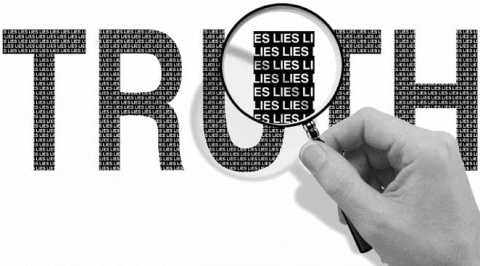How to catch a liar
Catching fibs at work
Catching employees fibbing at work is becoming increasingly important, said Floyd, a former US Central Intelligence Agency agent and the co-author of Get The Truth: Former CIA Officers Teach You How To Persuade Anyone to Tell All. Corporations are worried about fraud, hacking and star employees taking company secrets with them to a new job and more, Floyd said. Employees want to know when their boss is lying too.
The main reason we fib is to avoid unpleasant consequences, said Floyd. In everyday life, people say “I’m fine” when asked “how are you?” to duck an uncomfortable conversation about the terrible day they are having. In the business world, people do all sorts of unsavoury things and lie about them because, naturally, they don’t want to face repercussions.
For example, in 2006 Sanjay Kumar, the former chief executive officer of Computer Associates, was convicted for his role in $2.2bn accounting scandal in which he was accused of falsely reporting software licence revenues and lying to investors. Kumar was sentenced to 12 years in prison. The key to identifying liars: understanding why people lie and knowing the cues that come well before the evidence.
Tell-tell clues
People can accurately determine whether or not someone is lying only 54% of the time, said Dr Gordon Wright, a London-based behavioural scientist, citing research. Everyone lies differently, he explained, and we also tend to think everyone is being truthful. “We all have a truth bias,” Wright said. “If we didn’t assume people were being honest with us, then the whole communication process would break down.”
One can beat those odds by looking for certain behaviours, Wright said. Surprisingly, they’re not the behaviours that people expect. Most people believe liars avoid eye contact or think they switch their gaze rapidly left and right when they’re being untruthful, but there’s no evidence to suggest that this is the case, said Leanne ten Brinke, a professor of psychology at the University of California, Berkeley.
In fact, liars often have no trouble looking people in the eye, because they know that if they looked elsewhere, people would be less likely to believe them.
Instead, people should pay attention to facial expressions. Feelings don’t lie, she said. When people are making something up, they often try to replicate emotions, but the muscles in our faces won’t react unless those emotions are real.
A smile is a good example, she said. A genuine smile activates muscles that create crow’s feet around the eye. With a fake smile, you’ll turn your mouth upward, but eye muscles won’t move. It’s not easy to tell, but it’s not impossible either. “[The smile] looks incomplete and disingenuous,” ten Brinke said.
Lying also takes great mental effort. You need a coherent and plausible story that doesn’t give too many details, but also doesn’t leave too much out. Liars tend to give out less information than truth tellers and they may pause more or hesitate often, especially if they haven’t rehearsed their lie in advance, she said.
The CIA way
You can also tell if someone is lying by how they react to questions. After years of interrogations and interviews, Floyd and his CIA colleagues developed a lie detection method that analyses how people respond to questions. They came up with five signals.
First, non-verbal hints are particularly important. People who make big gestures, put their hands to their face or clear their throat often could be lying, he said.
Another sign: when someone avoids answering a question. Making persuasive statements — saying convincing things to give off the impression that everything is fine — is also a red flag.
Being aggressive or attacking someone is an indication of lying, too. Then there’s manipulation, where people try and control the situation by repeating questions or by giving non-answer statements, such as “that’s a good question”.
Floyd needs to see at least two of these behaviours before he can say someone is being deceptive, and the more that show up the better. When he sees several of these kinds of responses, he said he is fairly certain that someone isn’t telling the truth.
Context matters too, Wright said. If a company’s financials are suffering yet the boss says no jobs will be lost, you might want to think hard about whether that person is being truthful. Managers are well served by keeping a close eye on how disgruntled employees react to questions, and whether or not they’re showing some of those signs of lying.
Still, it remains tough to tell if someone is being dishonest if you aren’t constantly looking for it. Most people aren’t monitoring for these verbal and visual cues on a daily basis.
Although burned once by a lie, Royce Leather CEO Bauer doesn’t want to scrutinise every word his employees say, but he is trying to be cognisant of how his staff are talking to him. He hopes that by building trust and improving relationships with his workers, no one will need to be deceitful. “Relationships eliminate dishonesty,” he said. “Run your company with integrity, openness and honesty yourself and people won’t have a reason to lie.”
Bryan Borzykowski

